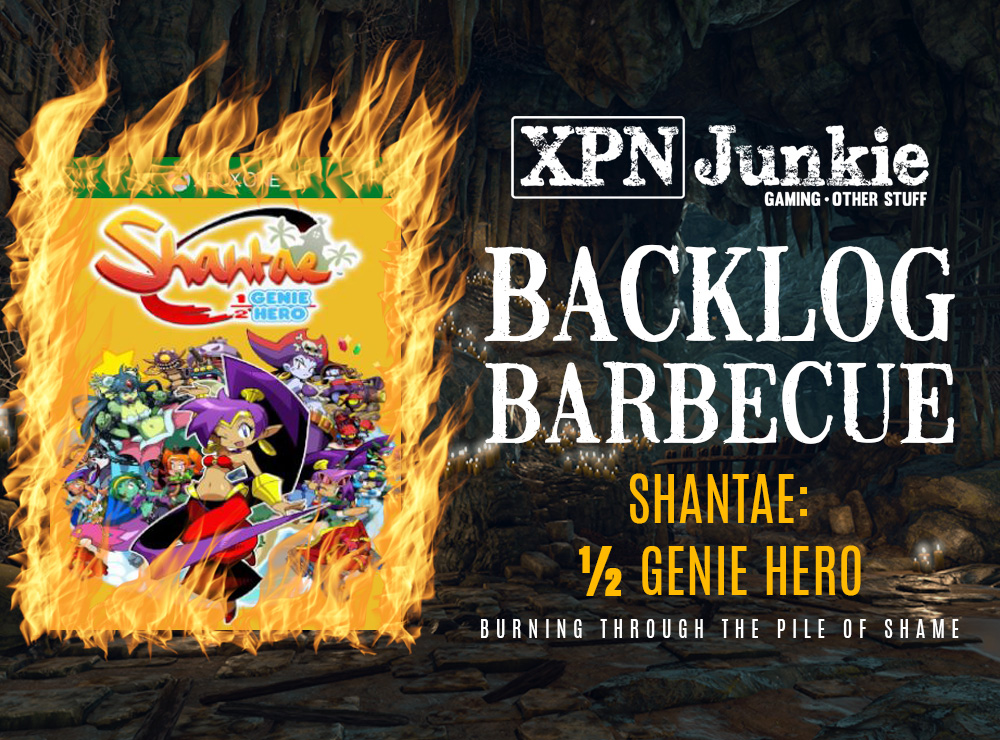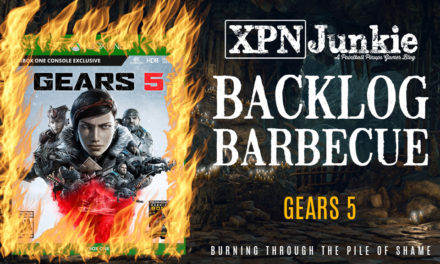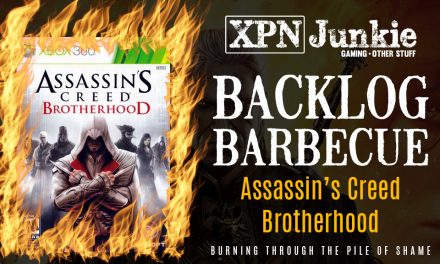Up until a few years ago, I had not idea who or what a Shantae was. I saw WayForward’s character art and video game screenshots and brushed it off as something that was a bit kiddie and girl-ish. In other words, not for me. But I’m a game whore –I’ll play anything once. So when Shantae and the Pirate’s Curse was offered up as an Xbox Game Pass title, I figured “what the hell” and gave it a try.
To my surprise, not only was the game surprisingly well-done, but the imagery and dialogue was kid-friendly enough for the youngsters while simultaneously throwing in a few “wink-wink” jokes here and there for the adults. While that game had some parts that annoyed me, I ultimately enjoyed it enough to finish it up. You can actually read my BBQ post on it here.
So when Shantae: Half Genie Hero was this time offered up as a Games with Gold title, I jumped on it. I’m not one to purchase these kinds of short platformers, but I’ll definitely play them if given the opportunity.
This game was not nearly as good as Pirate’s Curse.
Granted, it wasn’t a bad game, the platforming was still tight and enjoyable, and the graphics were great (even though they slightly changed the aesthetics of the character designs – mainly the females. But more on that in a minute.) However, this time they deviated from the winning formula that they used in Pirate’s Curse, instead going back to the “dances” that allow Shantae to change forms and gain special abilities.
There’s nothing wrong with that setup, and the previous game had something similar in the different articles of Risky Boots’s clothing that offered up different abilities. But it was the way in which the levels were designed and laid out this time around that got really tedious, really quick.
Instead of a large, overall area to explore, Half Genie Hero was broken up in to six or seven semi-linear stages. These stages were navigated from one end to the other, and were littered with obstacles that required Shantae to have specific abilites to overcome. Mission objectives required gaining access to certain areas of certain stages using certain abilities. But this would sometimes be a bit on the vague side, and sometimes abilities required objects from other stages that were gained by using other abilites gained by obtaining other objects. I know that sounds complicated, and it really isn’t that hard to grasp, once you know what you’re looking for. But this setup inherently requires to the player to visit the same stages over, and over, and over. Then, if you’re temporarily stumped or just can’t find what you’re looking for, expect to waste even more time running through the same area repeatedly because some stages won’t let you go backwards.
There are some items and abilities you can use to speed up the process, but the player still needs to navigate the stages in order to uncover the next key item.
That’s the gist of the game. That’s it. re-visiting the same areas repeatedly until you’re banging your head on the desk. The balance lies in the difficulty. The base difficulty for the game is mind-numbingly easy. I believe this more relaxed difficulty is a direct result of the game being designed to run through the same areas ad nauseam. I couldn’t imagine doing that if it was actually challenging.
Another thing I noticed, and I won’t say if it’s for better or worse, is that WayForward seems to change Shantae’s design with each new game. I thought the character art for Pirate’s Curse was fine, but in Half Genie Hero, she is starting to look a bit generic. Not in terms of design, but it just looks, lazier. Like how animation started to look after Nickelodeon and Cartoon Network popularized the computer-aided 2D animation technique. She just looks like a cheap knockoff of the previous one. You can see her evolution in the graphic below, taken from WayForward’s kickstarter.

I personally like the Pirate’s Curse version of Shantae the most. I can’t help but wonder what the reason was for bobble-head Shantae for Half Genie Hero. The in-game character sprites have always had that chibi-style look to them, but the character art during cutscenes and conversations just looks… off. Maybe this is the direction they truly want to take it, or maybe they’re trying to de-sexualize her, which is my personal bet.
In any case, the Shantae games remain one of the few indie offerings I’ve actually played through to completion, and that’s saying something. I don’t usually get on board with these kinds of games, but there’s something about this series that has hooked me. I think it’s the responsive platforming, as that seems to be getting more and more rare nowadays. This series turns out to be a damn good one for platforming.





